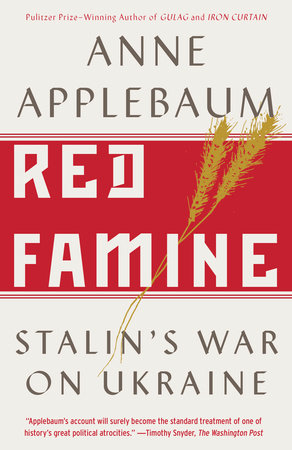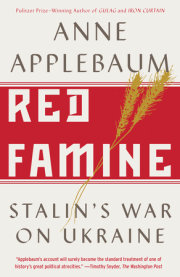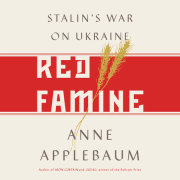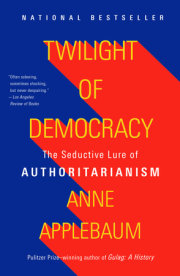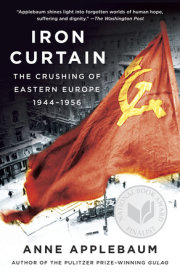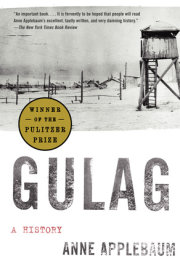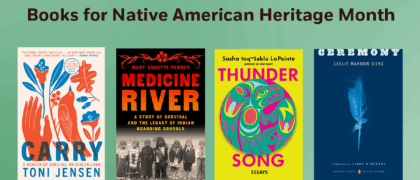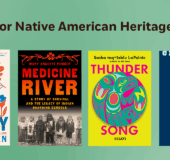INTRODUCTION
The Ukrainian Question
For centuries, the geography of Ukraine shaped the destiny of Ukraine. The Carpathian Mountains marked the border in the southwest, but the gentle forests and fields in the northwestern part of the country could not stop invading armies, and neither could the wide open steppe in the east. All of Ukraine’s great cities—Dnipropetrovsk and Odessa, Donetsk and Kharkiv, Poltava and Cherkasy and of course Kyiv, the ancient capital—lie in the East European Plain, a flatland that stretches across most of the country. Nikolai Gogol, a Ukrainian who wrote in Russian, once observed that the Dnieper River flows through the centre of Ukraine and forms a basin. From there “the rivers all branch out from the centre; not a single one of them flows along the border or serves as a natural border with neighbouring nations.” This fact had political consequences: “Had there been a natural border of mountains or sea on one side, the people who settled here would have carried on their political way of life and would have formed a separate nation.”
The absence of natural borders helps explain why Ukrainians failed, until the late twentieth century, to establish a sovereign Ukrainian state. By the late Middle Ages, there was a distinct Ukrainian language, with Slavic roots, related to but distinct from both Polish and Russian, much as Italian is related to but distinct from Spanish or French. Ukrainians had their own food, their own customs and local traditions, their own villains, heroes and legends. Like other European nations, Ukraine’s sense of identity sharpened during the eighteenth and nineteenth centuries. But for most of its history the territory we now call Ukraine was, like Ireland or Slovakia, a colony that formed part of other European land empires.
Ukraine—the word means “borderland” in both Russian and Polish—belongedto the Russian empire between the eighteenth and twentieth centuries. Prior to that, the same lands belonged to Poland, or rather the Polish-Lithuanian Commonwealth, which inherited them in 1569 from the Grand Duchy of Lithuania. Earlier still, Ukrainian lands lay at the heart of Kyivan Rus’, the medieval state in the ninth century formed by Slavic tribes and a Viking nobility, and, in the memories of the region, an almost mythical kingdom that Russians, Belarusians and Ukrainians all claim as their ancestor.
Over many centuries, imperial armies battled over Ukraine, sometimes with Ukrainian-speaking troops on both sides of the front lines. Polish hussars fought Turkish janissaries for control of what is now the Ukrainian town of Khotyn in 1621. The troops of the Russian tsar fought those of the Austro-Hungarian emperor in 1914 in Galicia. Hitler’s armies fought against Stalin’s in Kyiv, Lviv, Odessa and Sevastopol between 1941 and 1945.
The battle for control of Ukrainian territory always had an intellectual component as well. Ever since Europeans began to debate the meaning of nations and nationalism, historians, writers, journalists, poets and ethnographers have argued over the extent of Ukraine and the nature of the Ukrainians. From the time of their first contacts in the early Middle Ages, Poles always acknowledged that the Ukrainians were linguistically and culturally separate from themselves, even when they were part of the same state. Many of the Ukrainians who accepted Polish aristocratic titles in the sixteenth and seventeenth centuries remained Orthodox Christians, not Roman Catholics; Ukrainian peasants spoke a language that the Poles called “Ruthenian,” and were always described as having different customs, different music, different food.
Although at their imperial zenith they were more reluctant to acknowledge it, Muscovites also felt instinctively that Ukraine, which they sometimes called “southern Russia” or “little Russia,” differed from their northern homeland too. An early Russian traveller, Prince Ivan Dolgorukov, wrote in 1810 of the moment when his party finally “entered the borders of the Ukraine. My thoughts turned to [Bohdan] Khmelnytsky and [Ivan] Mazepa”—early Ukrainian national leaders—“and the alleys of trees disappeared . . . everywhere, without exception, there were clay huts, and there was no other accommodation.” The historian Serhiy Bilenky has observed that nineteenth-century Russians often had the same paternalistic attitude to Ukraine that northern Europeans at the time had towards Italy. Ukraine was an idealized, alternative nation, more primitive and at the same time more authentic, more emotional, more poetic than Russia.4 Poles also remained nostalgic for “their” Ukrainian lands long after they had been lost, making them the subject of romantic poetry and fiction.
Yet even while acknowledging the differences, both Poles and Russians also sought at times to undermine or deny the existence of a Ukrainian nation. “The history of Little Russia is like a tributary entering the main river of Russian history,” wrote Vissarion Belinsky, a leading theorist of nineteenth-century Russian nationalism. “Little Russians were always a tribe and never a people and still less—a state.” Russian scholars and bureaucrats treated the Ukrainian language as “a dialect, or half a dialect, or a mode of speech of the all-Russian language, in one word a patois, and as such had no right to an independent existence.” Unofficially, Russian writers used it to indicate colloquial or peasant speech. Polish writers, meanwhile, tended to stress the “emptiness” of the territory to the east, often describing the Ukrainian lands as an “uncivilized frontier, into which they brought culture and state formations.” The Poles used the expression dzikie pola, “wild fields,” to describe the empty lands of eastern Ukraine, a region that functioned, in their national imagination, much as the Wild West did in America.
Solid economic reasons lay behind these attitudes. The Greek historian Herodotus himself wrote about Ukraine’s famous “black earth,” the rich soil that is especially fertile in the lower part of the Dnieper River basin: “No better crops grow anywhere than along its banks, and where grain is not sown, the grass is the most luxuriant in the world.” The black-earth district encompasses about two-thirds of modern Ukraine—spreading from there into Russia and Kazakhstan—and, along with a relatively mild climate, makes it possible for Ukraine to produce two harvests every year. “Winter wheat” is planted in the autumn, and harvested in July and August; spring grains are planted in April and May, and harvested in October and November. The crops yielded by Ukraine’s exceptionally fertile land have long inspired ambitious traders. From the late Middle Ages, Polish merchants had brought Ukrainian grain northwards into the trade routes of the Baltic Sea. Polish princes and nobles set up what were, in modern parlance, early enterprise zones, offering exemptions from tax and military service to peasants who were willing to farm and develop Ukrainian land. The desire to hold on to such valuable property often lay behind the colonialist arguments: neither the Poles nor the Russians wanted to concedethat their agricultural breadbasket had an independent identity.
Nevertheless, quite apart from what their neighbours thought, a separate and distinct Ukrainian identity did take shape in the territories that now form modern Ukraine. From the end of the Middle Ages onwards, the people of this region shared a sense of who they were, often, though not always, defining themselves in opposition to occupying foreigners, whether Polish or Russian. Like the Russians and the Belarusians, they traced their history back to the kings and queens of Kyivan Rus’, and many felt themselves to be part of a great East Slavic civilization. Others identified themselves as underdogs or rebels, particularly admiring the great revolts of the Zaporozhian Cossacks, led by Bohdan Khmelnytsky, against Polish rule in the seventeenth century, and by Ivan Mazepa against Russian rule at the beginning of the eighteenth century. The Ukrainian Cossacks—self-governing, semi-military communities with their own internal laws—were the first Ukrainians to transform that sense of identity and grievance into concrete political projects, winning unusual privileges and a degree of autonomy from the tsars. Memorably (certainly later generations of Russian and Soviet leaders never forgot it), Ukrainian Cossacks joined the Polish army in its march on Moscow in 1610 and again in 1618, taking part in a siege of the city and helping ensure that the Polish-Russian conflict of that era ended, at least for a time, advantageously for Poland. Later, the tsars gave both the Ukrainian Cossacks and Russian-speaking Don Cossacks special status in order to keep them loyal to the Russian empire, with which they were allowed to preserve a particular identity. Their privileges guaranteed that they did not revolt. But Khmelnytsky and Mazepa left their mark on Polish and Russian memory, and on European history and literature too. “L’Ukraine a toujours aspiré à être libre,” wrote Voltaire after news of Mazepa’s rebellion spread to France: “Ukraine has always aspired to be free.”
During the centuries of colonial rule different regions of Ukraine did acquire different characters. The inhabitants of eastern Ukraine, who were longer under Russian control, spoke a version of Ukrainian that was slightly closer to Russian; they were also more likely to be Russian Orthodox Christians, following rites that descended from Byzantium, under a hierarchy led by Moscow. The inhabitants of Galicia, as well as Volhynia and Podolia, lived longer under Polish control and, after the partitions of Poland at the end of the eighteenth century, that of Austria-Hungary. They spoke a more “Polish” version of the language and were more likely to be Roman Catholics or Greek Catholics, a faith that uses rites similar to the Orthodox Church yet respects the authority of the Roman pope.
But because the borders between all of the regional powers shifted many times, members of both faiths lived, and still live, on both sides of the dividing line between former Russian and former Polish territories. By the nineteenth century, when Italians, Germans and other Europeans also began to identify themselves as peoples of modern nations, the intellectuals debating “Ukrainianness” in Ukraine were both Orthodox and Catholic, and lived in both “eastern” and “western” Ukraine. Despite differences in grammar and orthography, language unified Ukrainians across the region too. The use of the Cyrillic alphabet kept Ukrainian distinct from Polish, which is written in the Latin alphabet. (At one point the Habsburgs tried to impose a Latin script, but it failed to take hold.) The Ukrainian version of Cyrillic also kept it distinct from Russian, retaining enough differences, including some extra letters, to prevent the languages from becoming too close.
For much of Ukraine’s history, Ukrainian was spoken mostly in the countryside. As Ukraine was a colony of Poland, and then Russia and Austria-Hungary, Ukraine’s major cities—as Trotsky once observed—became centres of colonial control, islands of Russian, Polish or Jewish culture in a sea of Ukrainian peasantry. Well into the twentieth century, the cities and the countryside were thus divided by language: most urban Ukrainians spoke Russian, Polish or Yiddish, whereas rural Ukrainians spoke Ukrainian. Jews, if they did not speak Yiddish, often preferred Russian, the language of the state and of commerce. The peasants identified the cities with wealth, capitalism and “foreign”—mostly Russian—influence. Urban Ukraine, by contrast, thought of the countryside as backward and primitive.
These divisions also meant the promotion of “Ukrainianness” created conflict with Ukraine’s colonial rulers, as well as with the inhabitants of the Jewish shtetls who had made their home in the territory of the old Polish-Lithuanian Commonwealth since the Middle Ages. Khmelnytsky’s uprising included a mass pogrom, during which thousands—perhaps tens of thousands—of Jews were murdered. By the beginning of the nineteenth century, Ukrainians rarely saw the Jews as their most important rivals—Ukrainian poets and intellectuals mostly reserved their anger for Russians and Poles—but the widespread anti-semitism of the Russian empire inevitably affected Ukrainian-Jewish relations too.
The link between the language and the countryside also meant that the Ukrainian national movement always had a strong “peasant” flavour. As in other parts of Europe, the intellectuals who led Ukraine’s national awakening often began by rediscovering the language and customs of the countryside. Folklorists and linguists recorded the art, poetry and everyday speech of the Ukrainian peasantry. Although not taught in state schools, Ukrainian became the language of choice for a certain kind of rebellious, anti-establishment Ukrainian writer or artist. Patriotic private Sunday schools began to teach it too. It was never employed in official transactions, yet the language was used in private correspondence, and in poetry. In 1840, Taras Shevchenko, born an orphaned serf in 1814, published Kobzar—the word means “minstrel”—the first truly outstanding collection of Ukrainian verse. Shevchenko’s poetry combined romantic nationalism and an idealized picture of the countryside with anger at social injustice, and it set the tone for many of the arguments that were to come. In one of his most famous poems, “Zapovit” (“Testament”), he asked to be buried on the banks of the Dnieper River:
Oh bury me, then rise ye up
And break your heavy chains
And water with the tyrants’ blood
The freedom you have gained . . .
The importance of the peasantry also meant that from the very beginning the Ukrainian national awakening was synonymous with populist and what would later be called “left wing” opposition to the Russian and Polish-speaking merchants, landowners and aristocracy. For that reason, it rapidly gathered strength following the emancipation of the serfs across imperial Russia under Tsar Alexander II in1861. Freedom for the peasants was, in effect, freedom for Ukrainians, and a blow to their Russian and Polish masters. The pressure for a more powerful Ukrainian identity was, even then, also pressure for greater political and economic equality, as the imperial ruling class well understood.
Because it was never linked to state institutions, the Ukrainian national awakening was also, from its earliest days, expressed through the formation of a wide range of autonomous voluntary and charitable organizations, early examples of what we now call “civil society.” For a brief few years following the serfs’ emancipation, “Ukrainophiles” inspired younger Ukrainians to form self-help and study groups, to organize the publication of periodicals and newspapers, to found schools and Sunday schools and to spread literacy among the peasantry. National aspirations manifested themselves in calls for intellectual freedom, mass education, and upward mobility for the peasantry. In this sense, the Ukrainian national movement was from the earliest days influenced by similar movements in the West, containing strands of Western socialism as well as Western liberalism and conservatism.
This brief moment did not last. As soon as it began to gather strength, the Ukrainian national movement, alongside other national movements, was perceived by Moscow as a potential threat to the unity of imperial Russia. Like the Georgians, the Chechens and other groups who sought autonomy within the empire, the Ukrainians challenged the supremacy of the Russian language and a Russian interpretation of history that described Ukraine as “southwest Russia,” a mere province without any national identity. They also threatened to empower the peasants further at a time when they were already gaining economic influence. A wealthier, more literate and better-organized Ukrainian peasantry might also demand greater political rights.
Copyright © 2017 by Anne Applebaum. All rights reserved. No part of this excerpt may be reproduced or reprinted without permission in writing from the publisher.

